The Importance of Specialized Organ Transport Containers for Transplant Success
Specialized organ transport containers are crucial for maintaining the viability of organs during transit, highlighting the importance of specialized organ transport containers in ensuring successful transplants. This article explores how these containers work and why they are essential for the success of organ transplantation.
Key Takeaways
Specialized organ transport containers are essential for preserving organ viability during transit, significantly impacting transplantation success rates.
Temperature control and sterile conditions are crucial in organ transport, as they prevent cellular damage and ensure the organ remains functional upon arrival.
Investing in advanced transport solutions, such as the SherpaPak™ system, can reduce cold ischemic time and improve graft survival outcomes, ultimately enhancing patient care.
The Importance of Specialized Organ Transport Containers for Transplant Success
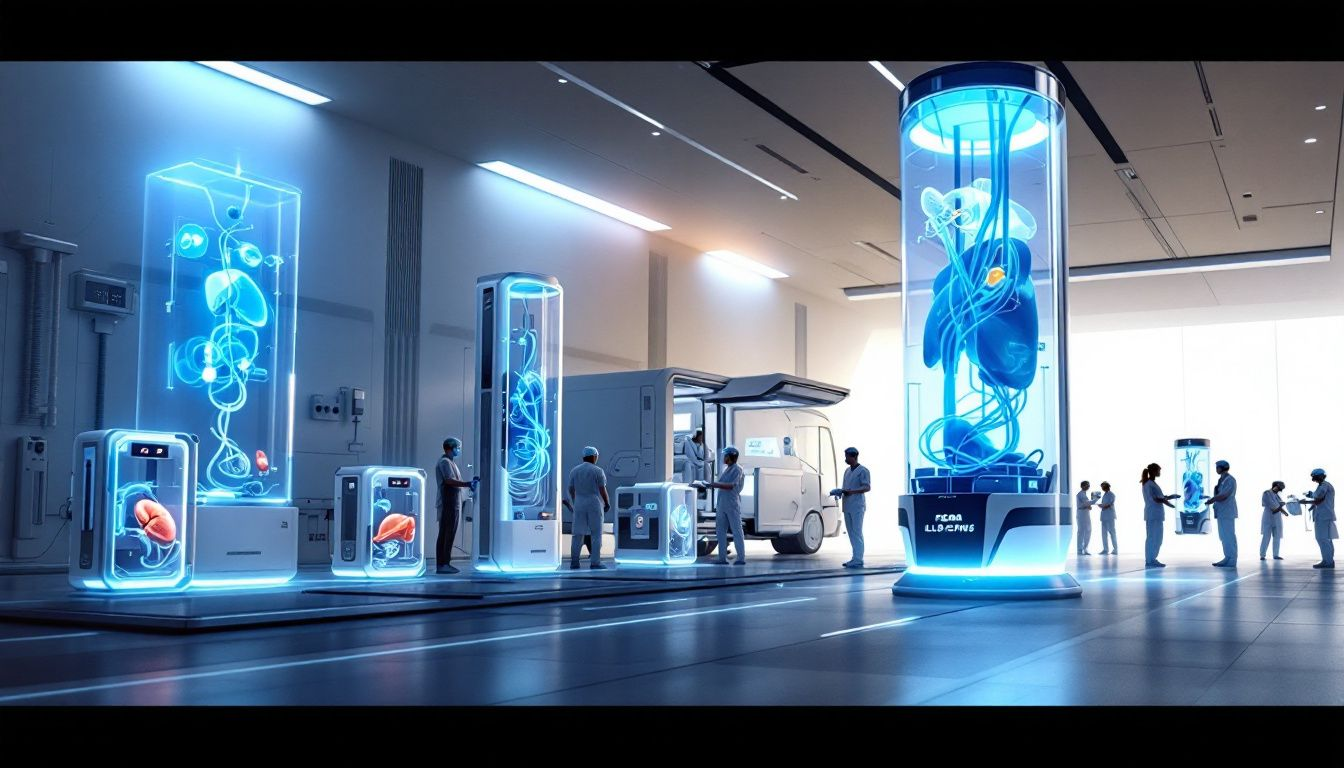
Specialized organ transport containers are the unsung heroes in the world of organ transplantation. They aim to preserve the organ’s viability during transit. This means keeping the organ in a state of suspended animation to minimize cellular activity and damage. Such care guarantees the organ remains viable for transplantation upon arrival.
The precision, speed, and reliability of organ transport are critical factors that directly influence the outcome of a transplant. The time-sensitive nature of organ procurement demands that every second counts, emphasizing the need for specialized transport solutions that can deliver organs swiftly and safely. For example, the accepted limit of cold ischemia for cardiac preservation is four hours, highlighting the urgency and precision needed.
Specialized transport vehicles equipped with advanced tools and technology are crucial for minimizing transit time while maintaining optimal conditions for the organ. These vehicles are designed to provide a controlled environment, ensuring the organ’s safety and viability throughout the journey. Adherence to best practices and a thorough understanding of preservation methods are also essential for the safe and efficient transport of organs.
Employing a professional transportation company can significantly impact the outcome of organ transport. These companies maintain the required temperature throughout the transport process, which is vital for keeping organs viable. The most common method of organ transport is cold storage, which involves using specialized containers to keep the organ at a low temperature, thereby halting metabolic activity and preserving the organ until it can be transplanted.
Upholding standards in organ transport is not just about compliance with regulations; it is about maintaining trust in the organ transplantation process. When all these factors come together, they ensure that the organ reaches its destination in the best possible condition and is ready for a life-saving transplant.
The next sections will delve deeper into specific aspects of organ transport, such as the role of specialized containers, temperature control, and maintaining sterility and safety. Each of these components plays a crucial role in the success of organ transplantation, and understanding them is key to appreciating the intricate dance that is organ transport.
The Role of Specialized Containers in Organ Transport
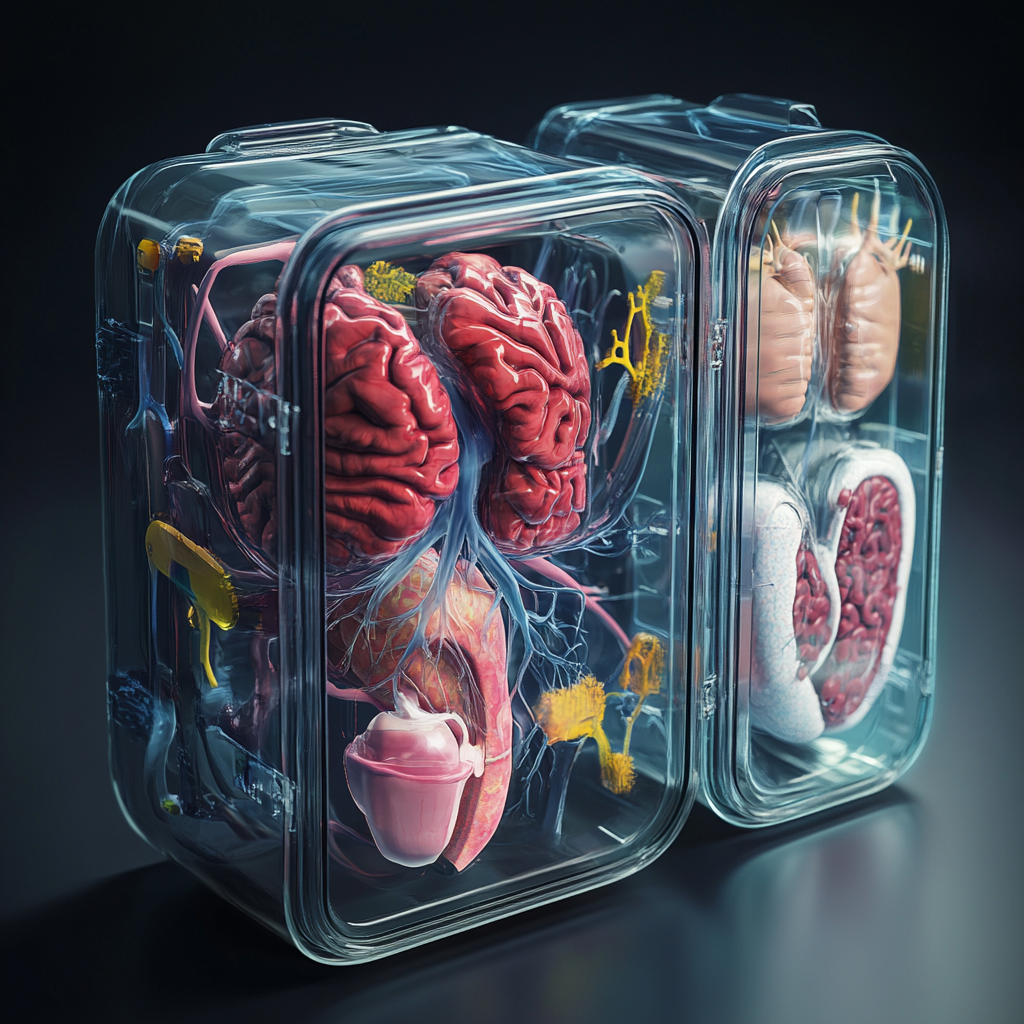
Specialized transport containers are vital to the success of organ transplantation. These containers are designed to maintain the viability of organs during long transfers, ensuring that they remain in a state of suspended animation. By reducing cellular activity and damage, these containers are essential in preserving the organ until it arrives at its destination.
Adherence to established standards and regulations is essential for ensuring compliance and maintaining trust in the organ transplantation process. This compliance is not just about following rules but about ensuring that every step of the transport process is designed to maintain the highest standards of care and safety.
Specialized vehicles with advanced technologies are key to successful organ transport. They maintain optimal conditions for organ preservation, including temperature control and safety mechanisms. By offering a controlled environment, these vehicles ensure the organ’s viability throughout the journey.
Hiring professional transportation services is crucial for adhering to best practices and ensuring speed and reliability throughout the transport process. These services are equipped to handle the unique challenges of organ transport, from maintaining the required temperature to ensuring that the organ is delivered on time.
In the next sections, we will delve deeper into the specifics of temperature control and maintaining sterility and safety during organ transport. These factors are critical in ensuring that the organ remains viable and ready for transplantation upon arrival.
Did you know that you can get from Manhattan to JFK in under 5 minutes without driving?
Blade offers seamless helicopter transfers from our West 30th Street Lounge in Manhattan to JFK Airport in just 5 minutes from $195 per seat.
Skip the traffic and ditch the stress with Blade's year-round airport service.

Temperature Control in Organ Transport
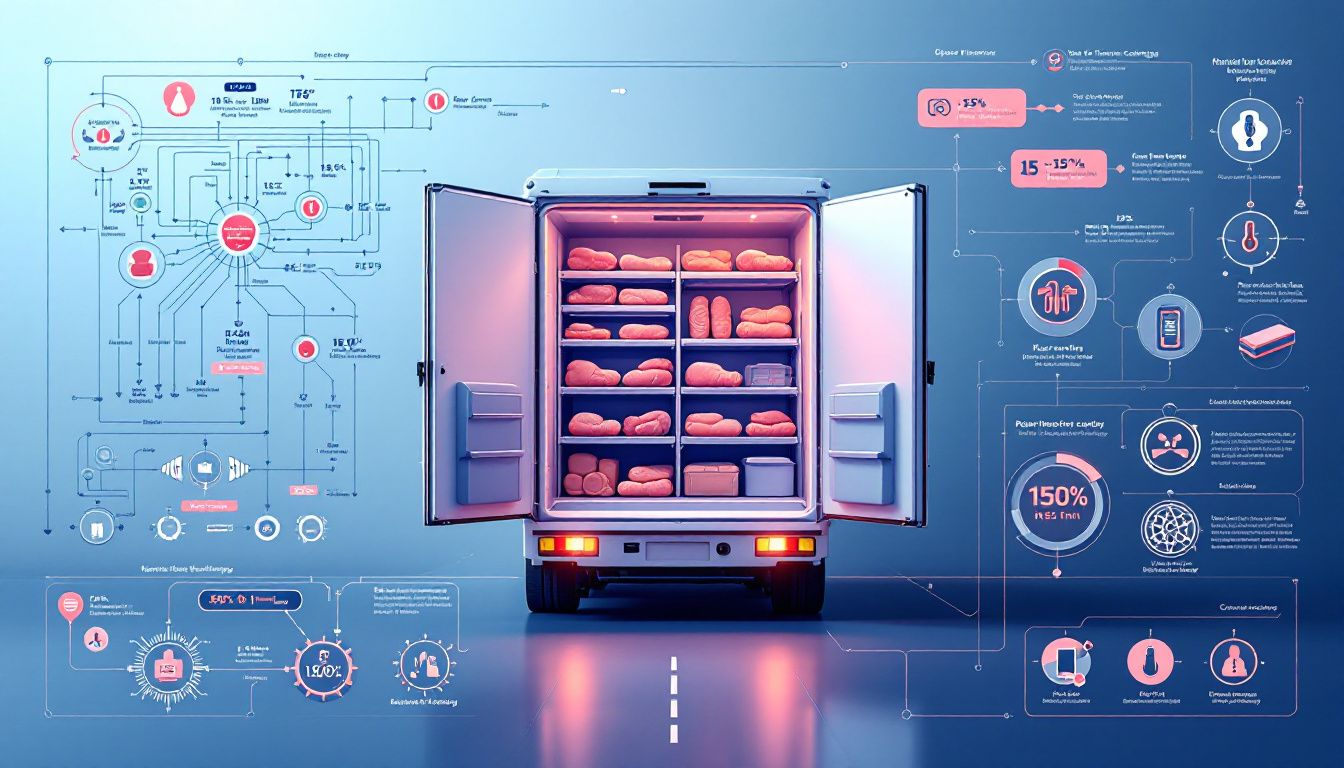
Temperature control is one of the most critical factors in organ transport. Maintaining a consistent temperature during transport is crucial to prevent cellular damage and organ rejection. If the temperature drops too low, it can lead to cellular injury and increase the risk of organ dysfunction. Therefore, precise temperature control is essential to ensure the organ’s viability.
Advances in cooling methods for organ transport, such as cold storage solutions and cold preservation solutions, halt metabolic activity, allowing for safer transportation before transplantation. These solutions keep the organ at a stable temperature, typically around 4°C, which is crucial for preserving the high energy phosphate levels needed for post-transplant function.
Professional transportation companies ensure organs are kept at the required temperature throughout the process. They use specialized containers with temperature control mechanisms to maintain optimal conditions.
Temperature-controlled transportation optimizes the organ’s condition, facilitating prompt transplantation, which is crucial for success. By maintaining a stable temperature, these transportation methods help prevent metabolic damage and ensure that the organ remains viable for transplantation.
Proper temperature control is essential for maximizing organ transplant success rates. Next, we’ll explore the importance of maintaining sterility and safety during transport to ensure the organ’s viability.
Maintaining Sterility and Safety
Sterility and safety during transport are as crucial as temperature control. Vascular perfusion clears residual blood from composite tissue allografts, enhancing sterility. This process ensures the organ remains free from contaminants.
Hypertonic preservation solutions minimize structural changes in organ membranes, maintaining integrity. They prevent cellular swelling and other preservation injuries during transport, making them an effective preservation solution.
Luminal flush solutions enhance the mucosal barrier function of small bowel transplants, critical for maintaining viability. Citrate in preservation solutions prevents harmful calcium ion accumulation, protecting structural integrity.
The SherpaPak™ system has shown a lower risk of infection compared to standard methods, with no positive blood cultures found in patients receiving hearts stored in it. This underscores the importance of advanced containers prioritizing sterility and safety.
Now, we’ll explore features of advanced organ transport containers that ensure safe and effective transport.
Features of Advanced Organ Transport Containers
Advanced containers are designed to ensure safe and effective organ transport. The Paragonix Sherpa Pak™ maintains organ temperatures between 4°C and 8°C for up to 30 hours. This extended maintenance is crucial for long-distance transport.
It uses phase-change materials that hold temperatures longer than conventional cooling packs, providing stable and reliable control. The inner hard shell immerses the organ in cold storage fluid, ensuring consistent cooling.
An integrated temperature data logger offers real-time monitoring, allowing for immediate adjustments if needed. This ensures the organ remains within the optimal temperature range, reducing temperature-related damage risk.
The Sherpa Pak™ system is single-use and operates without external power, enhancing reliability and portability. This design minimizes failure risk and ensures the organ remains viable throughout the journey.
Next, we’ll discuss technological advancements shaping the future of organ transport.
Technological Advancements in Organ Transport
Technological advancements are transforming organ transport, enabling higher success rates in transplantation. Real-time tracking ensures transparency and accountability, providing peace of mind to medical professionals and families. It allows for real-time updates, improving the overall transport experience.
The transport platform offers a user-friendly interface and logistical options like on-demand delivery, scheduled routes, and recurring services. These options provide flexibility and ensure that organs are transported in the most efficient manner possible.
AI and machine learning play vital roles in optimizing routes and improving transport monitoring. They predict potential delays and suggest alternative routes, ensuring timely delivery.
Innovations like normothermic perfusion, high subzero preservation, continuous hypothermic perfusion, and cryopreservation extend the storage limits of organs for transplants. These strategies are crucial for improving outcomes and saving lives.
Emerging technologies, such as drones, are being explored to enhance organ transport. Drones offer faster and more efficient transport, especially in areas with challenging logistics.
The continuous evolution of preservation and transport technologies holds significant potential for increasing transplant success rates. Next, we’ll discuss how these advancements impact graft survival rates.
Impact on Graft Survival Rates
Investing in specialized containers can significantly improve graft survival rates, leading to better patient outcomes. Cold ischemic time (CIT) is a critical factor influencing graft survival. Research shows that each additional six hours of CIT increases the risk of delayed graft function (DGF) by 23%. Thus, reducing CIT with efficient transport solutions is crucial for improving graft survival.
The SherpaPak™ system has shown promising results in early postoperative functions, such as improved right heart function indicated by better TAPSE values. These early improvements can lead to better long-term outcomes, highlighting the importance of advanced transport containers.
Though initially expensive, the long-term benefits of improved organ’s viability during transport often outweigh these costs. Better organ viability reduces graft failure risk and the need for re-transplantation, saving time and resources related to donor organs.
Specialized containers promote better regulatory compliance, minimizing potential legal and financial penalties. This compliance ensures that organs are transported in the safest and most effective manner possible.
Overall, the impact on graft survival rates underscores the need for advanced transport solutions. Next, we’ll provide case studies demonstrating successful organ transplants using specialized containers.
Case Studies: Successful Organ Transplants with Specialized Containers
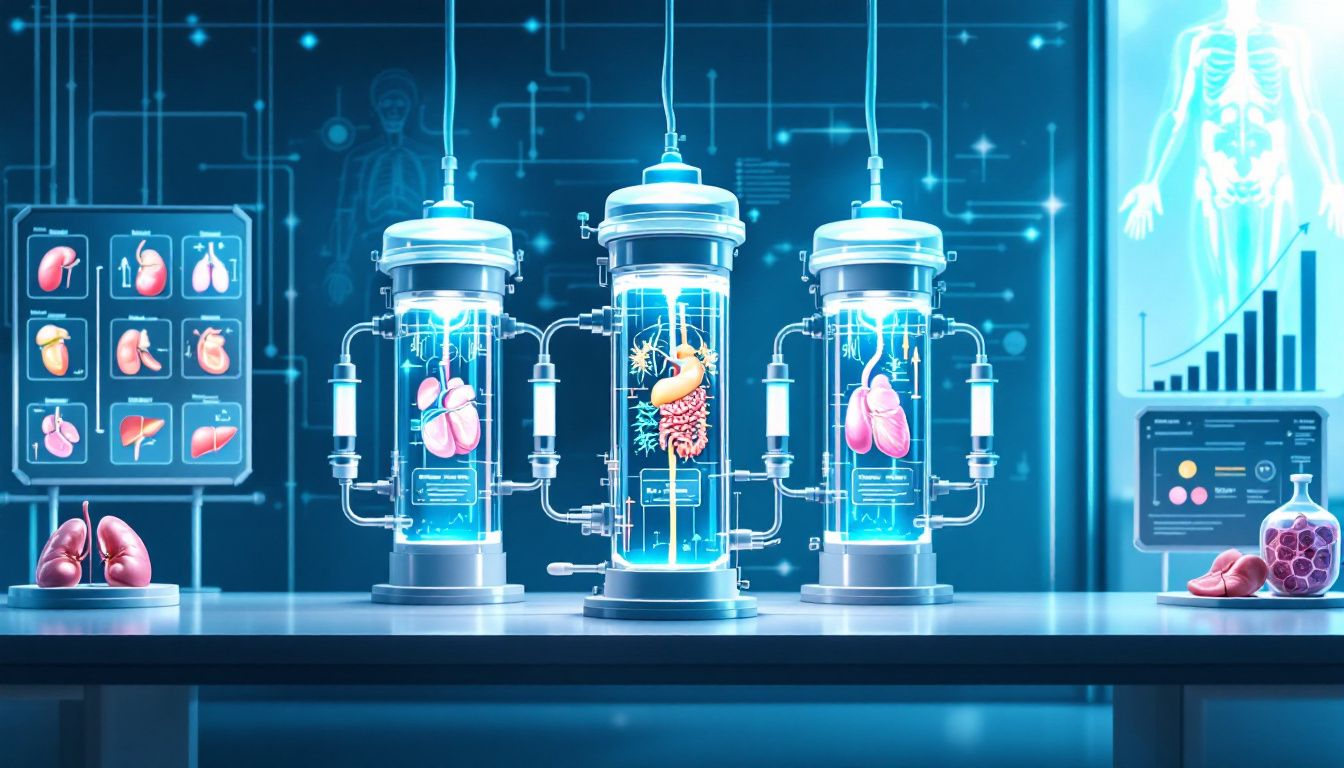
Real-world case studies offer compelling evidence for the success of specialized transport containers. In a heart transplant study, the SherpaPak™ group had a longer cold ischemic time of approximately 207.7 minutes compared to 181.6 minutes in the standard technique group. Despite the longer ischemic time, outcomes were favorable, demonstrating the SherpaPak™’s effectiveness in preserving organ viability.
Advanced containers facilitate successful transplants by maintaining optimal conditions during transport. They ensure organs remain viable during long transfers, significantly improving transplant success chances.
Another example is liver transplants, where specialized containers reduce the risk of biliary complications, common in liver transplantation. By maintaining a stable temperature and controlled environment, these containers preserve the liver’s function and integrity during transport.
These case studies highlight the importance of advanced transport containers in transplantation. Next, we’ll guide readers on choosing the right transport container.
Did you know that you can get from Manhattan to JFK in under 5 minutes without driving?
Blade offers seamless helicopter transfers from our West 30th Street Lounge in Manhattan to JFK Airport in just 5 minutes from $195 per seat.
Skip the traffic and ditch the stress with Blade's year-round airport service.

Choosing the Right Transport Container
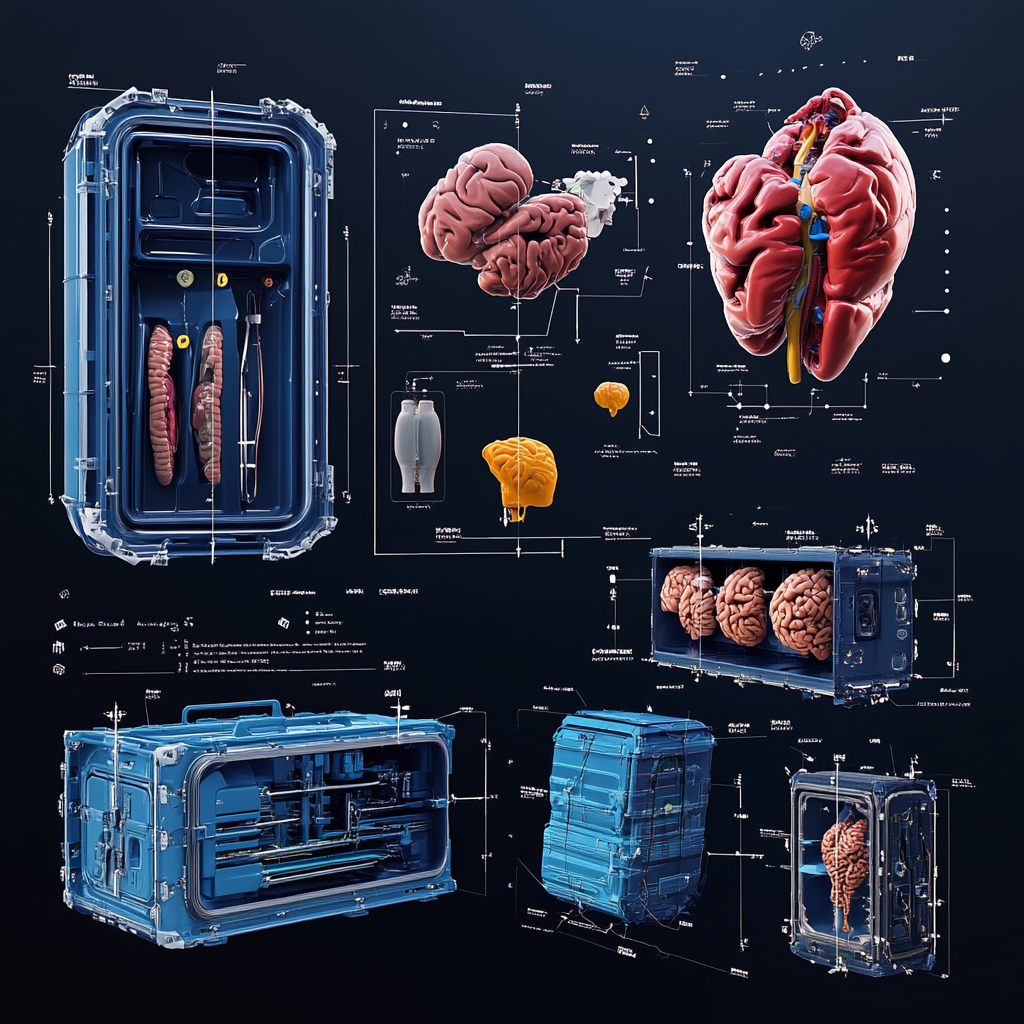
Selecting the right container is crucial for successful organ transport. Customized containers are essential for maintaining optimal transport conditions. They are designed to meet the specific needs of different organs, ensuring viability throughout the journey.
Monitoring and maintaining conditions in the container are essential for ensuring organ viability during transport. Standard shipping containers use cooling and heating pads for temperature management, ensuring the organ remains within the optimal range.
Specialized systems transport larger organs and provide features like cooling and heating pads and oxygen supply. These systems are particularly useful for other organs like the liver and lungs, which require specific conditions to remain viable.
When hiring a transportation company, consider their experience in transporting organs and availability of temperature-controlled systems. Choosing a company with a proven track record ensures safe and efficient transport.
By selecting the right container, medical professionals can significantly improve transplant success chances. The next section will provide a cost-benefit analysis of using specialized containers.
Cost-Benefit Analysis of Specialized Containers
The cost-benefit analysis of specialized containers highlights their importance in the organ transport process. Techniques for organ preservation aim to minimize damage. This helps in promoting optimal graft survival and function. Specialized transport containers achieve this by maintaining optimal conditions during transport, thereby improving graft survival rates.
While specialized containers may have a higher initial cost, their benefits often outweigh these costs. Improved regulatory compliance, for example, minimizes potential legal and financial penalties associated with organ transport. Additionally, better organ viability reduces the need for re-transplantation, ultimately saving both time and resources.
The growth of the organ transport service market indicates a rising recognition of the importance of specialized containers in healthcare. As more organizations invest in these advanced transport solutions, the overall quality and success rates of organ transplants are likely to improve.
The next section will discuss the importance of coordination with the transplant team in ensuring successful organ transport.
Coordination with the Transplant Team
Coordination with the transplant team is crucial for the success of organ transport. Transport logistics play a critical role in ensuring the safe and secure transportation of organs at controlled temperatures. Medical couriers are responsible for ensuring precision, speed, and reliability in transporting organs, which is vital for transplant success.
The organ procurement process involves coordination among medical professionals, logistics experts, and couriers to ensure timely delivery, as detailed in how medical teams coordinate organ transport. Each team member plays a vital role in ensuring that the transplant process allows the organ donor to reach its destination in the best possible condition.
Responsibilities of medical couriers include transporting hope and life by ensuring the successful delivery of organs. Maintaining controlled temperature during organ transport is essential to prevent damage and maximize the success of the transplant.
Transport containers must comply with local and international regulations regarding biological materials for safe delivery. These containers should be designed to keep biological materials upright to prevent spillage during transit. Each transport container should be clearly labeled, following established standards, to identify the biological materials contained within.
The primary receptacle for transporting biological materials must be leak-proof and securely sealed to avoid contamination. Contingency planning in organ transport involves anticipating potential issues and having strategies to address them promptly.
The next section will explore future trends in organ transport technology, highlighting innovations that are shaping the field.
Future Trends in Organ Transport Technology
The future of organ transport technology is promising, with several innovations poised to improve outcomes and save more lives. Innovations like normothermic perfusion, high subzero preservation, and cryopreservation extend the storage limits of organs for transplants. These preservation strategies are crucial for maintaining organ viability and improving transplant success rates.
Cryopreservation, in particular, holds promise for true organ banking, potentially transforming the way organs are stored and transported. This technology could allow for longer storage times and greater flexibility in matching donors with recipients.
Emerging technologies, such as drones, are being explored to enhance organ transport. Drones offer faster and more efficient transport, especially in areas with challenging logistics. They have the potential to overcome traditional barriers and deliver organs swiftly and safely.
Artificial intelligence and machine learning are playing vital roles in optimizing transport routes and improving monitoring. They predict potential delays and suggest alternative routes, ensuring timely delivery.
The continuous evolution of organ preservation and transport technologies holds significant potential for increasing successful organ transplantation rates in the future. As these technologies continue to advance, the overall quality and success rates of organ transplants are likely to improve, as highlighted in this summary organ transplantation.
The next section will provide a summary and conclusion of the key points discussed in this blog post.
Bottom Line: The Importance of Specialized Organ Transport Containers for Transplant Success
The importance of specialized organ transport containers in ensuring successful organ transplantation cannot be overstated. These containers play a critical role in maintaining organ viability during transport, minimizing cellular damage, and ensuring that the organ remains in optimal condition for transplantation. From temperature control to maintaining sterility and safety, each aspect of the transport process is crucial for the success of the transplant.
Technological advancements in organ transport, such as real-time tracking and AI-driven route optimization, are transforming the field and improving outcomes. Innovations in organ preservation, including normothermic perfusion and cryopreservation, are extending the viability window and saving more lives. The investment in specialized transport containers, despite their initial cost, is justified by the long-term benefits of improved organ viability and reduced graft failure rates.
As we look to the future, the continuous evolution of organ preservation and transport technologies holds significant potential for increasing transplant success rates. By embracing these advancements and ensuring meticulous coordination with the transplant team, we can continue to improve patient outcomes and save more lives through successful organ transplantation.
FAQs about The Importance of Specialized Organ Transport Containers for Transplant Success
Why are specialized organ transport containers important?
Specialized organ transport containers are essential for preserving organ viability by providing a controlled environment that minimizes cellular damage and maintains optimal conditions for transplantation. This ensures the highest chance of success for the transplant procedure.
How does temperature control affect organ transport?
Temperature control is crucial for organ transport, as it prevents cellular damage and reduces the risk of organ rejection. Proper cold storage helps preserve the organ by halting metabolic activity until transplantation can occur.
What are the benefits of using advanced transport containers like the SherpaPak™?
Using advanced transport containers like the SherpaPak™ significantly enhances reliability and portability by maintaining optimal temperatures for up to 30 hours and providing real-time temperature monitoring. This makes them an ideal choice for sensitive cargo that requires precise temperature control.
How do technological advancements improve organ transport?
Technological advancements significantly enhance organ transport by enabling real-time tracking, AI-driven route optimization, and innovative preservation methods, ultimately improving efficiency and success rates. This ensures that organs arrive at their destination in optimal condition.
What future trends are shaping the field of organ transport?
Innovations such as cryopreservation, drone technology for expedited transport, and the integration of artificial intelligence to optimize routes are significantly shaping the future of organ transport. These advancements promise to enhance efficiency and improve outcomes in organ transplantation.
Disclaimer:
Please be aware that the content on this page has been generated by using artificial intelligence language models and may contain errors, inconsistencies, or outdated information. It is provided as-is without any warranties or guarantees of accuracy. We strongly recommend using this content as a starting point for further research. We disclaim any liability for damages or losses resulting from the use or reliance on this content.